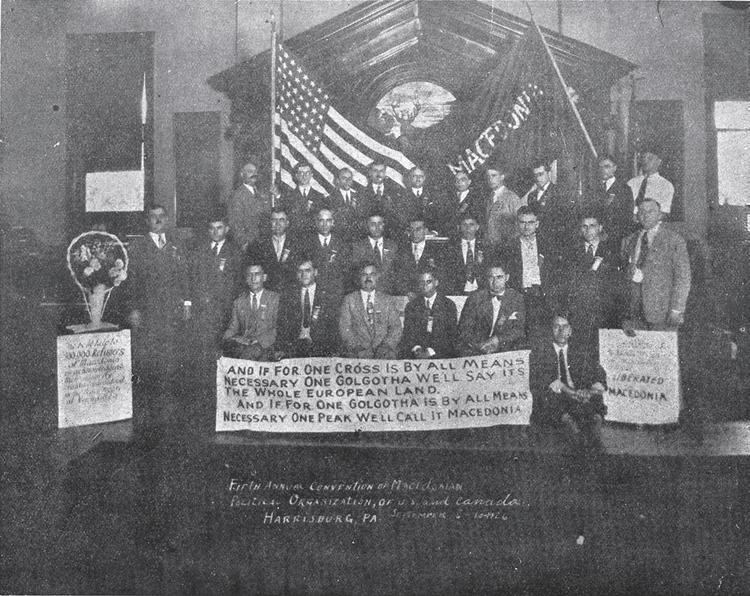 | ||
Macedonian Americans (Macedonian: Македонски Американци, Makedonski Amerikanci) is an American ethnic group of Macedonian heritage.
Contents
History
The first Macedonian American immigrants came from the border regions in the north of what is today Greek Macedonia, primarily the regions near Kastoria (Kostur), Florina (Lerin), and the south-west of the Republic of Macedonia, notably around Bitola. In the first half of 20th century they were considered and identified as Bulgarians or as Macedonian Bulgarians.
It is estimated that around 50,000 Macedonians emigrated to the United States between 1903 and 1906, but the outbreak of the Balkan Wars and World War I curtailed the flow. Around 20,000 remained in the U.S., and the rest returned home. The immigrants were predominantly peasants, with the remainder including craftsmen, workers, and intellectuals. Immigration restarted after the wars; most of the new immigrants were ethnic Macedonians from Greece, many of whom had been expelled from Greek Macedonia in the 1920s. Since the 1920s and 1930s the Macedonian language has been recorded in American censuses. Around 50,000-60,000 Macedonians had emigrated to the US by the end of World War II.
Post World War II
The aftermath of the war led to a fresh round of Macedonian immigration, primarily from Greece, as a consequence of ethnic Macedonians being expelled by the post-war Greek government or otherwise encouraged to leave after the Greek civil war of 1946-49. 70,000 emigrated to Canada, Australia, the U.S., and other European countries.
After Yugoslavia liberalized its emigration policies in 1960, another 40,000 Macedonians emigrated during the period 1960-77. Most have been economic migrants rather than political dissidents. At that time most of the Americans born of Macedonian Bulgarian descent have hardly any knowledge of Bulgaria and increasingly began to identify themselves simply as Macedonians.
Demographics
A large proportion of Macedonian Americans live in the New York metropolitan area and the Northeastern United States. Another large cluster of Macedonian Americans lives in the Midwest, particularly Detroit, where roughly 10,000 (nearly 20% of all Macedonian Americans) are reported to be living.
Religion
Most Macedonian Americans, especially those immigrating to North America in the last half of the 20th century, belong to the Macedonian Orthodox Church, under the American-Canadian Macedonian Orthodox Diocese. Macedonian Americans immigrating before that time were generally affiliated with either the Bulgarian Orthodox Church, the Bulgarian Diocese of the Orthodox Church in America or the Serbian Orthodox Church.
Smaller numbers of Macedonian Americans attend parishes affiliated with the Russian Orthodox Church or the Greek Orthodox Church. Through assimilation or intermarriage, many who remain observant are members of the Catholic Church and various Protestant denominations.
There are about 20 Macedonian Orthodox Churches in the United States, of which all but four are located in the Northeast or Midwest. The oldest parish of the Macedonian Orthodox Church in America is the Macedonian Orthodox Cathedral of the Dormition of the Virgin Mary located in Columbus (Reynoldsburg), Ohio. The parish was organized on September 17, 1958.
Macedonian language in the United States
Three universities in the United States, the University of Chicago, Arizona State University, and Indiana University, offer Macedonian language courses.
Michigan has more Macedonian language speakers than any other state with 4,425. Five more states, New Jersey, New York, Indiana, Ohio, and Illinois, also have more than 1,000 speakers.
Counties by concentration of Macedonians
As of 2000, 0.5% of residents of Hamtramck, Michigan, a city primarily surrounded by Detroit, are of Macedonian ancestry.
